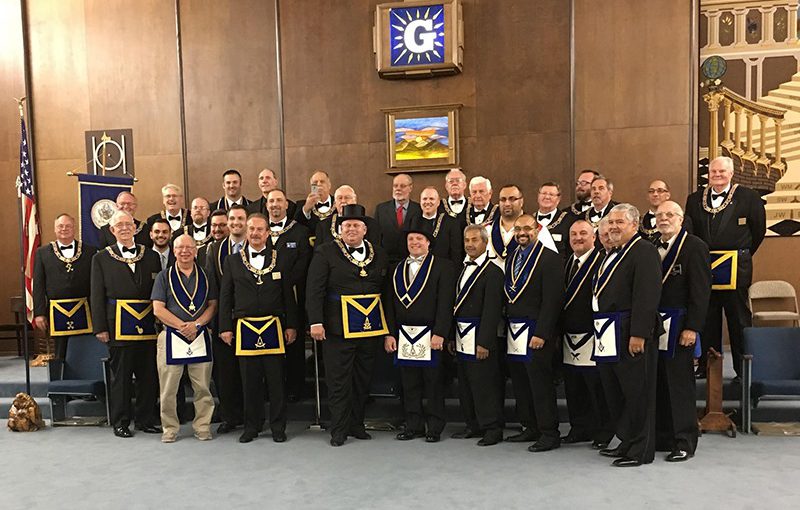In addition to the symbolism attached to architectural tools, Freemasonry is built upon stories and legends. And, no story is more intriguing than the one about the “traveling man” – the stonemason who traveled from work site to work site in search of a job. We have little direct evidence of how traveling stonemasons did this, but it remains an important part of the lore of Freemasonry.
According to our traditional history, when a building was completed, and stonemasons were released from their duties, they would scatter in different directions looking for work. Upon their arrival at a new work site, the master stonemason in charge would test them to determine if they were really who they claimed to be. One test asked them to recite part of the legendary history of the craft – the Old Charges. Another required them to give the proper passwords and grips. The final test was to ask them for the “mason word.” The mysterious “mason word” was proof that they were, indeed, members of the guild of stonemasons, for it was the most carefully guarded of all the secrets. It was so secret that it was only given in a way and a manner known to fellow masons, and then only in a whisper – “mouth to ear.”
Contemporary Masonic historians have searched for evidence of this colorful story in the old records of the craft, but have come up empty handed. Perhaps these “traveling masons” were so careful with their means of proving who they really were that no evidence has survived to prove the accuracy of this old story. Or, perhaps the evidence has been under our noses all the time, but we have not been looking in the right place.
The “right place” to look may not have been in England, Scotland, or Ireland – the homeland of speculative Freemasonry as we know it – but in France. France has preserved an organization similar to Freemasonry called the “Compagnonnage.” The French title of those who belong to it is “Compagnons du Tour de France.” Today the “Tour de France” is a famous bicycle race, but the race was named for a much older institution, a “Tour de France” associated with stonemasons in the Middle Ages. When a journeyman stonemason (a fellow of the craft, as we would call him) wanted to become a master stonemason, he would leave home and go “on tour.” The tour – the “Tour de France” – would take him to many towns around the country where he would work for different master stonemasons to prove his skill. It was as if he were having his “card punched” by other skilled workmen, who would certify that he, indeed, proved his worth to achieve the rank of “master stonemason.”

